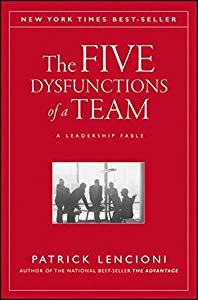Who is Your #1 Team?
Patrick Lencioni's powerful fable of how to create a high-performance team
In December of 2002, my husband and I were on our way to Costa Rica to celebrate our 10th wedding anniversary. As often happens, he fell asleep shortly after take-off and I pulled out my airplane reading.
This time it was Patrick Lencioni’s newly published The Five Dysfunctions of a Team . I was immediately captivated by this phenomenal book, because I totally believed in and agreed with the author’s model for how an effective leadership team should function.
I had already read so many books that stated if members of a team were not truly interdependent, then they were not a team; they were just a group of people. They also contended that this was even the case for high-level executive teams.
Prior to reading Lencioni’s book, I had always thought companies were paying these leaders too much money to not have them functioning at a higher level than that of a simple group of individuals. They should be expected to act like they care about the success of the whole organization, not just their own silo.
I now had a model to support this theory, in a very well-written story—what I call a page-turner whenever I introduce it to teams. I immediately began sharing this model with the teams that I consulted with, and they too saw the power in it.
Over the following years, as I shared Lencioni’s book and model with numerous teams, I was struck by one common theme from the participants in the session— the paradigm shift of who is your number one team . They had not realized how closely they had been focusing on their own team—that is, the one that reported to them. This had a significant impact on their perspective of the needs of the business, the lack of attention they gave to the problems and opportunities of their teammates, and the power that could be unleashed if they truly began to look at the business synergistically as one team.






